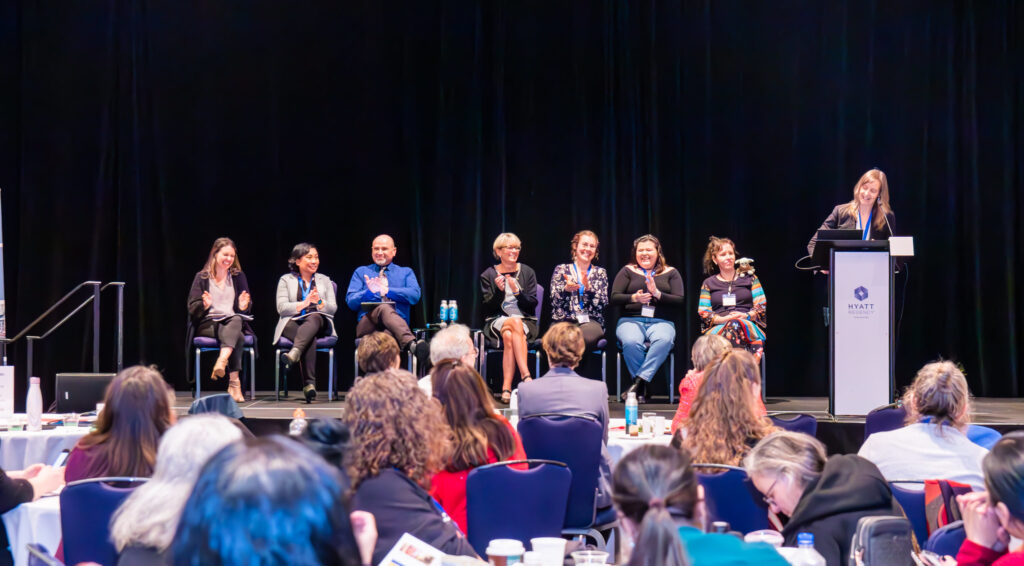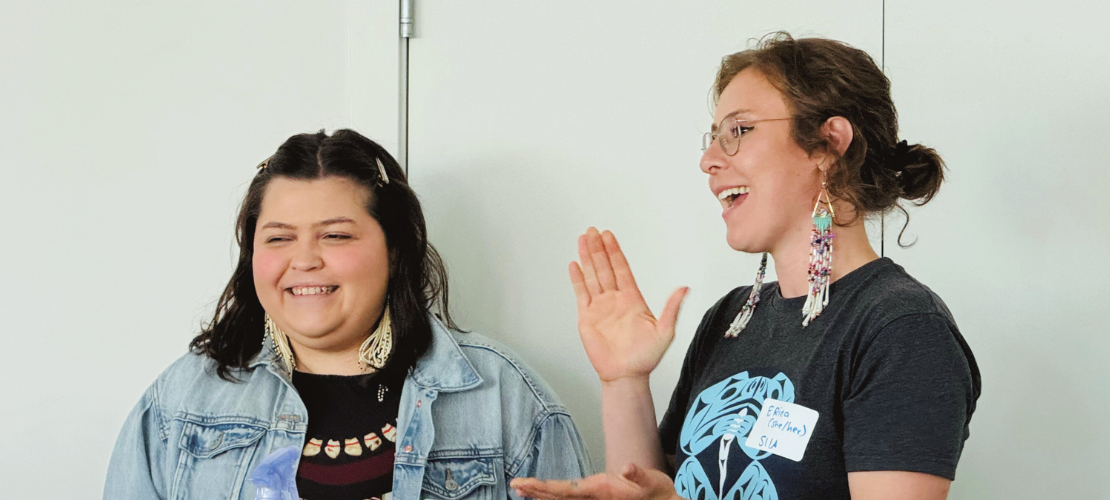Erica Pepevnak and Jenna Lancaster (?Ixc’amgilakw) from the South Island Indigenous Authority (SIIA) have been busy in the recent years. As the Service Quality Lead and Urban Community Engagement Lead, respectively, Pepevnak and Lancaster have traveled alongside their team throughout South Vancouver Island gathering cultural teachings, stories and information from Indigenous community members and service providers to support the development of a new Child and Family Legislation for Indigenous Children and Families on South Vancouver Island.
SIIA is the Indigenous Governing Body representing seven First Nations on the South of Vancouver Island, as well as Indigenous guests on their territory. With this legal designation, SIIA acts as representative for South Island Indigenous people in Nation-to-Nation engagements with federal and provincial governments aimed at resuming full jurisdiction over child and family services, in line with Bill C-92.
Bill C-92 , An Act respecting First Nations, Inuit, and Métis children, youth and families enshrines into law the right for Section 35 rights-holders to assert legal jurisdiction over and provide services to their children and families.
“Our people of the South Island First Nations have never relinquished our inherent jurisdiction and responsibility for our children and families. We have our own laws and traditional ways of caring for our children.”
—Paddling Together for Jurisdiction (2023)

Earlier this year, Pepevnak and Lancaster joined the Human Early Learning Partnership (HELP) at the UBC Early Years Conference 2024 to share their experience using Child Development Monitoring System (Monitoring System) data, collected by HELP, as part of their wellness framework development.
Part of the process of reasserting jurisdiction over child and family services is defining what “community wellness” means for the Nations and Indigenous peoples SIIA represents. The framework aims to foster a holistic understanding of child and youth well-being that goes beyond a deficit lens and basic metrics to highlight the profound importance of land, family, community, culture (including ceremony and language), and the necessity of spaces that foster love and safety in relationships.
Given the scarcity of data sources on early childhood and youth well-being, Monitoring System data gathered by HELP, in partnership with school districts across BC, has been helpful. There are four school districts that operate within SIIA’s territories. SIIA requested the available Monitoring System data (EDI and MDI, disaggregated for Indigenous students) for these districts from HELP, through a process approved by the Aboriginal Steering Committee (ASC) at HELP.
SIIA found this data useful as a starting point to ignite conversations and strategic thinking about what could inform a ‘community wellness framework’. Additionally, in reviewing the available Monitoring System data alongside the qualitative data gathered through community engagements, SIIA found overlap between what community identified as key indicators of child and youth wellness and what was available through the Monitoring System. In fact, SIIA estimated that between 57-79% of their desired metrics could be gathered through Monitoring System data.
“We are doing research and talking to people in our communities, making sure the law and our services are based on our own culture and needs.”
—Paddling Together for Jurisdiction (2023)
| SIIA wellness indicators of interest | MDI survey questions |
| Our kids know (or are learning) their language | Which language(s) do you speak at home…? |
| Our kids feel safe at home and in their community | In my neighbourhood/community there is an adult… who really cares about me |
| Our kids have healthy people they feel safe with, and can call on for help, in their community | Are their safe spaces in your neighbourhood/community where you feel comfortable to hang out? Who would you talk to if you were feeling sad, stressed, or worried… |
| Our kids are proud of who they are and where they come from | In general, I like being the way I am. I have a lot to be proud of. |
Data is collected about Indigenous people through many systems and structures. However, as Pepevnak explains, “many Nations don’t know where to start accessing this data – about their own children, families and communities. This creates a power imbalance with other entities controlling their information critical for quality decision-making and planning. Having access to disaggregated data for Indigenous children living on our Territories was so important for this process.”
“First Nations governments are not wanting to operate with the Big Brother mentality that we’ve all been groomed into believing in relation to what data does to us – it’s more like we want to come from the grandmother perspective. We need to know because we care.”
—Gwen Phillips, Ktunaxa Nation, Indigenous Data Sovereignty Advocate,
Disaggregated Demographic Data Collection in British Columbia: The Grandmother’s Perspective (2020, p.8)
Grounded in the traditional laws and ways of being of the South Island Nations, SIIA’s community wellness framework outlines the governance, processes and practices that will support their reassertion of jurisdiction over child and family services. This work includes the need to develop a robust data system and IT framework to support the implementation, and ongoing monitoring, of the framework.
SIIA has demonstrated the potential for Monitoring System data to help identify and support child and youth well-being, honoring the unique identities, strengths and needs of communities.
Additional Resources
- South Island Indigenous Authority report, Paddling Together for Jurisdiction(2023)
- First Nations Information and Governance Centre, The First Nations Principles of OCAP (Ownership, Control, Access, Possession)
- British Columbia’s Office of the Human Rights Commissioner report, Disaggregated Demographic Data Collection in British Columbia: The Grandmother’s Perspective (2020)
